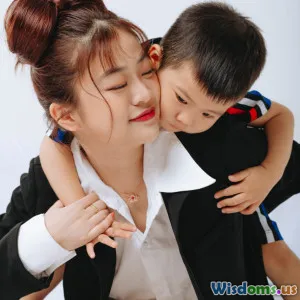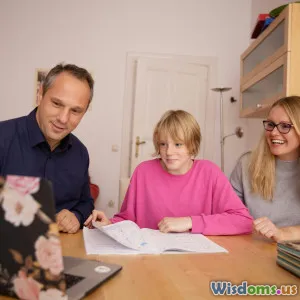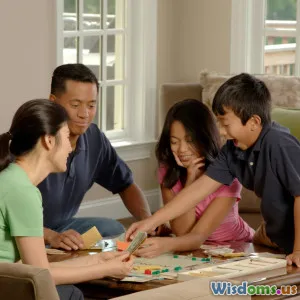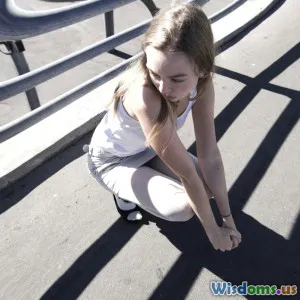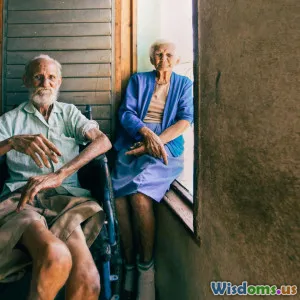
What Moving Your Aging Parent In Taught Me About Patience
7 min read Discover the profound lessons on patience learned from moving an aging parent in. (0 Reviews)
What Moving Your Aging Parent In Taught Me About Patience
Moving an aging parent into your home is a deeply personal and transformative experience. Beyond the physical act of relocation, it reveals some of life’s greatest lessons about patience, empathy, and unconditional love. In this article, I share my journey and discovery on what this transition taught me about the virtue of patience.
Introduction: More Than Just Moving
When my father decided to move in with me, I thought it would simply be a matter of logistics – packing boxes, setting up a room, and making a few adjustments in the arrangement of daily life. However, this experience quickly unfolded as a profound lesson in humility, understanding, and above all, patience.
The process tested me, challenged my routines, and reshaped my perceptions about growing older and caregiving. If you are facing a similar situation or might in the future, understanding these insights might ease your journey.
The Emotional Complexity of Relocation
The Challenge of Change
For many elderly parents, moving out of a familiar home is a significant emotional upheaval. According to a 2021 report from AARP, 87% of seniors prefer to age in place rather than relocate. Inviting a parent into your home often means to negotiate emotional landscapes shaped by nostalgia, loss, and sometimes, fear.
My father, once fiercely independent, struggled with the loss of autonomy the move implied. Patience was crucial as I navigated daily frustrations, like him insisting on doing tasks he no longer safely could or repeatedly reminiscing about his old neighborhood.
Learning to Listen
Patience stems not only from waiting but from truly listening — to frustrations, fears, and hopes. I learned that allowing my father to voice his feelings without rushing to fix or dismiss them was key. This meant sometimes sitting through long stories or answering the same questions multiple times.
The Practical Side: Moving and Adjusting
Logistics Demand Patience
The physical move itself was an exercise in trial and error. Choosing what furniture to keep and what to discard became emotionally charged moments. I realized patience was not just with my father, but with the process.
Unexpected delays, forgotten items, or new needs emerging after the move meant constant adjustments. For example, adapting the bathroom for fall safety—what seemed “minor” became critical for his well-being.
Creating Shared Routines
Daily schedules shifted dramatically. Establishing routines that respected his pace, such as slower meal times or breaks for walks, required me to slow down and adjust.
Psychologist Dr. Laura Carstensen notes in her work on aging that routines provide comfort, which is essential — building them together deepened our connection and made daily life smoother.
Patience in Managing Caregiving Roles
When Roles Reverse
Moving my father in meant shifting roles—from child to caregiver. This reversal comes with its own emotional and psychological challenges. Impatience and frustration sometimes bubbled up when he struggled with tasks I perceived as simple.
Recognizing this as a normal, shared human experience helped me practice compassion over judgment. Author Brené Brown highlights that empathy requires “being with” people in discomfort, not trying to fix it immediately.
Acceptance of Slow Progress
Physical and cognitive changes in aging do not follow predictable trajectories. Sometimes a small step forward took days or weeks — like relearning how to use technology to video chat with grandchildren.
Celebrating these incremental victories demands patience, but they are the moments that sustain caregivers through demanding days.
Insights and Takeaways
Patience as a Tool for Stronger Family Bonds
The patience I cultivated wasn’t about passive waiting; it was active, engaged, and loving. It created a space where my father felt respected and empowered, despite his vulnerabilities.
Growth Through Challenges
The challenge of moving an aging parent is often a catalyst for personal growth. It nurtures emotional intelligence and resilience, reminding us that patience deepens our capacity for love.
Conclusion: Embracing the Journey
Moving my aging parent in has been one of the most demanding yet rewarding experiences of my life. It taught me that patience goes beyond tolerance — it transforms our relationships and ourselves.
Caregiving is a journey with unpredictable detours, but with patience, it becomes a path filled with meaningful connection and humanity. If you find yourself on this path, embrace the patience it requires as the most valuable lesson, and the greatest gift you will give — and receive.
References:
- AARP Aging in Place Data, 2021
- Dr. Laura Carstensen, Stanford Center on Longevity
- Brené Brown, "The Power of Vulnerability", TED Talk
This story is an invitation to reflect and grow; your journey may differ, but patience remains universal.
Rate the Post
User Reviews
Popular Posts











